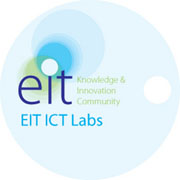New challenges for the universities - on the way towards “Humboldt 2.0”

Hannu Tenhunen is a professor of electronic systems design and is also extremely interested in issues that concern education, entrepreneurship and innovation and has established extensive international cooperation. He sees before him a completely new type of university – a type of post-Humboldt – where success is based on collective efforts through broad cooperation.
A conversation with Hannu Tenhunen is seldom what you think it will be. From preprepared questions about his research we quickly move on into the exciting and more comprehensive line of thought about universities of the future. According to Hannu Tenhunen we are about to leave the old Humboldt ideal which has governed universities in the West for several hundred years.
“I want to talk about the great challenge which the universities face. The world is changing very quickly and the way in which universities operate must also change radically. We are now at the end of the age of the Humboldt ideal with open universities slightly isolated from the rest of the world.”
According to the National Encyclopedia, Humboldt represents a system of widespread ideals regarding the universities’ union with research, teachers’ independence and students’ free study options. According to Hannu Tenhunen we will not be able to continue along this line, among other things, because the number of students is increasing quickly and because the financing of research is becoming more and more complicated. This will require other methods of working at universities. And this will demand that universities contribute to growth, quality and to the development of society.
Hannu Tenhunen is of the opinion that we must start to prepare ourselves for the “post-Humboldt” era – a sort of Humboldt 2.0. But what does this mean in practice?
“It is an extremely open university, and is definitely a very international university. It will be based on cooperation between universities which will form strong alliances,” Hannu Tenhunen explains. That is why we have to promote ourselves. We can be world leaders within certain areas, but we must nevertheless be able to offer broad educations, and that is why we need to have “friends”.
Strong alliances
But how do we find such “friends”? How we build these strong alliances?
“KTH is an extremely strong trademark internationally. We have been a front runner as regards international cooperation, Hannu explains. We have also developed a high profile and chosen to work with the best. Our friends are quite simply good universities.
The most important cooperation takes place within clusters which gather the 12 most important technical universities in Europe and have associated members in the United States, Canada, Brazil, China and Russia. Hannu also points out the long-standing cooperation with for example Stanford and the international work in the growth areas such as China and India.
But why should we get involved with China?
“The global economy is changing, and Asia is getting stronger. And we have an advantage because we are already established there,” Hannu emphasizes. China is becoming more and more globalised, and you could regard our efforts as a type of “inward investment” which will pay for itself later on.
Hannu means that we can offer unique educations of a high quality - both from a teaching point of view and technically. At the same time it is impossible to have all students here with us, and there will therefore be the need for a “business model” which will help us educate students in other countries. And it is not intended that taxpayers will pay for this. But we will not only become involved internationally in order to strengthen our own position.
“We have a moral obligation to do something,” Hannu says. We must try to promote openness, tolerance, equality and the rights of the individual.
Fewer lone wolves
But what will Humboldt 2.0 give us?
Hannu means that one of the aims of broader cooperation is that we will gain several larger platforms to work in. Something that we are beginning to see in our two VINNOVA excellence centers – iPack and Wireless@KTH. He is also pointing at the successful ICT application for the strategic research millions which involves cooperation on a larger platform.
“We are in fact in some way already on the way towards Humboldt 2.0 - at the moment it is 1.2,” he says with a laugh. We will move on from a system with individual stars to one with team players. The platforms will become bigger and broader with less room for individual professors of the traditional type.
Researchers instead will form part of a larger complex where they can become engrossed in their own particular area of specialization. It will not be possible to be such a big individual star any more, but because you form part of a strong constellation, the results will have a greater impact, Hannu emphasizes.
“This will be able to offer an improved, more exciting job and more interesting challenges,” Hannu Tenhunen explains. It is no longer sufficient with individual stars, this is all about collective results and diversity.
Innovation and commercialization
Hannu thinks that the universities must develop their role at the beginning of the innovation chain. Students and teachers must obtain basic knowledge in innovation and entrepreneurship. Björn Pehrsson’s courses in entrepreneurship have become the model for the Nordic region’s Master’s educations which Hannu has helped to develop. He cooperates with the Nordic region’s technical universities and with business schools in order to offer Master’s educations in innovation and entrepreneurship - Nordic Master School in Innovative ICT.
“There is no equivalent in the world, and we have admitted 800-900 students in the system during the first year,” Hannu says. We estimate that approximately 20-30 % of these will also study our courses in entrepreneurship.

The knowledge triangle, education - research – entrepreneurship, is also one of the foundations of the new successful application to become a so-called Knowledge and Innovation Community, KIC in the ICT area within the European Institute of Technology, EIT. Behind the application is the extremely strong consortium – EIT ICT Labs – with all of the most important research institutes and technology companies as well as the biggest technical universities in the five nodes: Stockholm, Helsingfors, Berlin, Paris and Eindhoven.
“We are extremely happy about this,” Hannu Tenhunen exclaims. Through EIT ICT Labs, we will be active in EIT. The Swedish node will be localized in Kista, and we will assume particular responsibility for the educations at Master’s level for entrepreneurs.
Challenges for electronic systems research
Hannu Tenhunen’s area of research is electronic systems. He is also a so-called coordinator for this strategic research area in KTH ICT. Research is carried out in this area on the different ways of creating electronic systems and electronic circuit boards for high performance and security. Within Hannu’s area, researchers are at work with different types of electronic systems - parallel systems, distributed systems and so-called “autonomous” systems. Groups such as SoC (System on chip) and NoC Network on chip) are among the leaders, for example.
Within this strategic area, there is also the VINN Excellence Centre iPack which is developing smart packagings of the future. Together with four other schools in KTH, the Innovative Centre for Embedded Systems (ICES) is run, one of the strongest competence groups in embedded systems in Europe.
“The need for good electronic solutions has not reduced at all - requirements and needs just look a little different,” says Hannu. I do not believe that the solution lies in delving “deeper into physics” - that is not where developments lie. Instead, demands are made on the construction of the actual system.
There will be a need for robust systems that work within more or less all areas of society. Many of the problems in society can be solved through smart ICT systems, Hannu means. A new and exciting challenge is faced by the environmental area. This is all about the management of resources, and this is what Hannu refers to as our “ecological footprint”.
“I cannot see that there will be any stop in the development within my area - at least not in the next 20-30 years,” Hannu emphasizes. Through ICT, we will be able to change things without lowering our living standards.
What will happen is that the technology “will disappear into” our day-to-day environment, Hannu believes. We will continue to have electronic systems all around us. Demands will be made on user-friendly interfaces, on performance, on operational reliability and also most likely, on different types of “self-healing” electronic systems. This is about research which will only be available to industry in about 5-10 years time. Industry is hardly aware yet that this knowledge will be required, but in about five years time perhaps people will start to make enquiries about it and it will take another five years before we will have a fully operational technical solution, Hannu Tenhunen believes.
“I am convinced that this area will become a “hot topic” in research over the next five years,” says Hannu Tenhunen This is all about systems, about the architecture and about the interfaces. We are working with a pilot study for a research project. We have 5-6 “scouts” out there looking, scanning and who will be returning home with what they have found. We will just have to wait and see.
“I am sure that it will be sufficient up until my retirement!” – says the man who will probably never will settle down completely.
Interview December 2009
